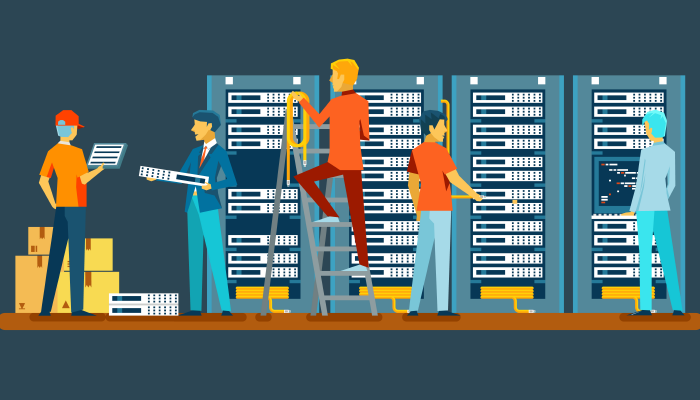There are many reasons an organization may need to migrate a data center (DC). Data center migrations can be triggered by data center consolidations after a merger, an expansion, end of lease situations, regulatory requirements, a move to the cloud, and a number of other scenarios.
While data center migrations can be powered by different motives, each data center migration has one strategic best practice in common: you need to discover, map, and inventory all your existing data center assets in order to move, replace, or retire them.
A data center inventory provides a road map for what needs to be done to close down and relocate a data center. Data center inventories can be manually compiled or they can be created using a software package such as BMC Helix Discovery to automate asset discovery and map application dependencies.
Regardless of whether you manually create your DC inventory or whether you use a third-party package, here’s a data center migration checklist of items you need to discover and map while planning a data center move.
Current data center contractual obligations
Review any terms and conditions associated with the data center you are leaving, including termination clauses, and penalties. This tells you what obligations you have in leaving an existing data center.
Hardware inventory
The hardware inventory discovers the physical servers and infrastructure equipment you need to move or replace. This equipment includes all DC network servers, PCs, printers, routers, switches, firewalls, Web filters, Web server farms, load balancing devices, modems, edge or DMZ servers, uninterruptable power supplies (UPSes), power distribution units (PDUs), backup devices, etc. Each piece of equipment should be inventoried with:
- Machine manufacturer, model, and date placed in service or approximate age
- Operating system and version
- IP information, including IP addresses used, subnet, gateway, routing (if applicable) and DNS servers they use
- Relevant equipment-specific information
- Power requirements, including wattage, input/output voltage, amps, types of electrical connectors, and whether the equipment uses single or redundant power supplies
This list may provide surprises, including critical equipment you didn’t realize you had or ancient servers that still service critical functions. Be thorough.
Communications inventory
The communications inventory includes all non-tangible network resources and configurations that again, need to be moved, replaced, or retired with the DC move. Items needed here include:
- Internet class A, B, or C networks used in the DC and the organization you obtained them from
- Internal (non-routable) IP address networks used in the data center (10.x.x.x, 192.168.x.x, or 172.16.x.x through 172.31.x.x)
- IP information gathered from the hardware inventory
- Telecommunications lines (Telco), IP address classes and subnet masks associated with each Telco line
- Domain names and registrars for domains that are tied to data center IP addresses
- DHCP IP address reservations for specific DC and subnet equipment
- Internal and external DNS entries that reference IP addresses in the data center
- Firewall access control lists (ACLs) containing outside IP addresses that the firewall allows traffic into and out of the data center for DMZ IP addresses
- Contract information associated with any leased resource, including the date the contract expires, line speeds (if applicable), termination procedures, and the date each contract expires
Like the hardware inventory, the communications inventory can contain surprises. Surprises might include domain IP addresses that are owned by the data center you are moving away from, Telco lines that have multiple years left on their contracts, severe penalties for terminating a contract, and other unexpected items.
Application Inventory Map
After you’ve inventoried your hardware and communications inventory, you need to identify all applications running on DC hardware and the physical or logical machines they are running on, as well as any outside servers that communicate with DC hardware or communication resources. This includes:
- Core network applications such as domain controllers and file and print servers
- Support services, such as Windows Server Update Services (WSUS) servers that provide Windows patches to client devices, third-party servers that update client software such as anti-virus and malware management consoles, email servers, database servers, Web servers, FTP servers, time-clock servers, backup servers, and remote access servers that reside on data center servers
- Production applications that run your business such as ERP software, business intelligence, big data servers, and CRM software residing on DC servers
- Servers or applications in other organization-owned data centers that communicate with the applications in the DC being moved
- PC applications that communicate with applications in the data center
- Customers and business partners who access your network or applications through firewalls in your Data Center, for applications such as EDI, FTP exchange, and remote access to vendor-owned equipment
- External Web sites that exchange data with DC servers
- Email providers and email filtering services
- IP addresses or DNS entries each of the above entities use to contact applications on your network
The application inventory provides a map of how interconnected your data center is, both inside your organization and outside your organization. It shows you all the connections that need to be accounted for when you move.
The first and next step
The data center inventory provides all the planning information needed to successfully game plan a data center move to another physical DC or to the cloud. It documents the physical and network infrastructure that powers your company, as well as the application connections that rely on that infrastructure.
The DC inventory helps you create a data center move strategy that informs how to move a data center. It also helps you identify and plan for any risks your organization faces with a DC move.
A DC inventory should be one of the first items you create after the decision to move a data Center has been made. Please feel free to contact BMC for more information on to organize and automate a Data Center inventory.







